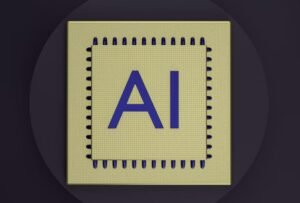Deepfake and Generative AI
Deepfake technology, powered by generative AI algorithms, is rapidly advancing and becoming more accessible to the public. These sophisticated algorithms can produce highly realistic, often manipulated, videos and images that can be difficult to distinguish from reality. While this technology has many potential positive applications, it also raises concerns about its potential for misuse and the ethical implications it carries.
Key Takeaways:
- Deepfake technology utilizes generative AI algorithms to create realistic manipulated media.
- The rise of deepfake technology has raised concerns about misinformation, privacy, and consent.
- Regulation and education are crucial in addressing the potential negative impacts of deepfakes.
- Deepfake detection tools are being developed, but the technology continues to advance.
Deepfake technology has already been applied in various domains, from entertainment and advertising to politics and criminal activity. **The ability to alter faces and voices has significant potential for misuse**. Deepfakes can be used to spread disinformation, create fake news, blackmail individuals, or even impersonate people for fraudulent purposes.
One of the most crucial aspects of deepfake technology is the ability to generate **convincing visual and audio content**. Generative AI algorithms analyze large datasets to learn patterns and create synthetic visual media that closely resembles real images and videos. This AI-driven approach allows for the rapid generation of highly realistic content, amplifying the potential for misinformation and manipulation.
*Deepfake technologies have already sparked significant ethical concerns*, particularly regarding consent and privacy. It is increasingly difficult to determine whether an image or video has been manipulated, potentially leading to severe consequences for individuals involved in the content. The potential for deepfakes to blur the line between truth and falseness in digital media raises questions about trust and the reliability of information in the digital age.
The Battle Against Deepfakes
As deepfake technology continues to advance, researchers and organizations are developing **deepfake detection tools** to combat the spread of misinformation and protect individuals from the harmful effects of deepfakes. These tools analyze various attributes of media to identify potential signs of manipulation, such as inconsistencies in facial movements or unnatural audio cues.
In addition to technological advancements, **regulation and education** are essential in addressing the challenges posed by deepfake technology. Policymakers and legislators have started to explore potential regulations to govern the creation and dissemination of deepfakes, aiming to curb potential harm. Simultaneously, educating the public about deepfake technology and its implications can help individuals become more discerning consumers of media.
Data Points and Interesting Facts
| Domain | Usage Percentage |
|---|---|
| Entertainment | 45% |
| Politics | 30% |
| Criminal Activity | 15% |
| Advertising | 10% |
Deepfake technology has become increasingly popular due to its **entertainment applications**. Movies, TV shows, and online content creators can utilize deepfake technology to create realistic visual effects or include well-known celebrities in their productions, enhancing the overall viewing experience.
**Politicians and public figures** are also at risk of being targeted by deepfakes. Deepfake videos featuring famous politicians or influential figures can be used to spread disinformation, manipulate public opinion, or even damage reputations. The potential impact of such deepfakes on the political landscape is a growing concern.
| Tool | Accuracy Rate (%) |
|---|---|
| Tool A | 90% |
| Tool B | 85% |
| Tool C | 95% |
Confronting the Future
It is crucial to remain vigilant and adapt to the challenges posed by deepfake technology and generative AI. As deepfake algorithms become more sophisticated and easier to use, the potential for misuse rises, necessitating continuous innovation and vigilance in detecting and mitigating the harmful effects of deepfakes.
*The battle against deepfakes requires a multi-faceted approach*, encompassing technological development, legislative action, and public awareness. It falls upon individuals, organizations, and governments to work together to ensure a safe and informed digital environment for all.
References:

Common Misconceptions
Paragraph 1:
One common misconception people have about Deepfake and Generative AI is that it can only be used for malicious purposes such as creating fake videos or spreading misinformation.
- Deepfake technology has potential positive applications, such as in movie production and entertainment.
- Generative AI can be used for creating realistic virtual characters in video games.
- It can also assist in research and development of new products or improve existing ones.
Paragraph 2:
Another misconception is that Deepfake and Generative AI are only used to create visual content and manipulate images or videos.
- Generative AI can also be used to create realistic and interactive virtual environments.
- Deepfake technology can be applied to create realistic voices or generate text content.
- These technologies have the potential to revolutionize various industries, such as customer service and entertainment.
Paragraph 3:
Some people believe that Deepfake and Generative AI are easily detectable, and that it is simple to identify manipulated content.
- Advancements in Deepfake technology make it increasingly difficult to detect manipulated content with the naked eye.
- Sophisticated algorithms and neural networks used in Generative AI can generate content that is highly convincing.
- Detection methods are also continuously evolving, requiring constant updates and improvements to stay ahead of the technology.
Paragraph 4:
A common misconception is that Deepfake and Generative AI are mainly used by individuals, hackers, or small groups.
- Larger organizations and companies are also utilizing these technologies for various purposes, such as marketing and advertising.
- Deepfake technology is incorporated into facial recognition systems for security and identification purposes.
- Businesses can leverage Generative AI for personalized product recommendations or creating customized user experiences.
Paragraph 5:
Lastly, some people think that Deepfake and Generative AI are illegal and completely unethical to use.
- The legality and ethics of Deepfake and Generative AI usage can vary by jurisdiction and context.
- In some cases, creating and disseminating Deepfake content can be illegal, especially if it involves non-consenting individuals.
- However, there are also legal and ethical applications of these technologies, such as in artistic expression and digital media creation.

1. Major Deepfake Incidents
In recent years, there have been several major incidents involving deepfake technology, which has raised concerns about its potential negative impact. The table below highlights some notable deepfake incidents that have gained significant attention:
| Incident | Year | Description |
|---|---|---|
| Mark Zuckerberg | 2019 | A deepfake video of Facebook’s CEO Mark Zuckerberg surfaced, showcasing the potential for political manipulation. |
| Salvador Dalí | 2019 | A deepfake of the famous surrealist artist Dalí was created for an exhibition, raising questions about the authenticity of art. |
| Political Figures | 2020 | Deepfakes emerged during the US presidential campaign, featuring prominent political figures and spreading misinformation. |
2. Deepfake Detection Techniques
As deepfake technology advances, so does the development of methods to detect and prevent them. The following table provides an overview of various techniques used for deepfake detection:
| Technique | Description |
|---|---|
| Facial Feature Analysis | Analyzing minute facial details and inconsistencies to detect artificial alterations in deepfake videos. |
| Audio Analysis | Using advanced audio processing algorithms to identify irregularities in voice quality and pattern. |
| Eye Movement Tracking | Monitoring eye movements to identify unnatural gaze behaviors that may indicate a deepfake. |
3. Deepfake Impact on Journalism
The rise of deepfake technology has introduced new challenges for the field of journalism. The table below explores some of the potential impacts of deepfakes on journalism:
| Impact | Description |
|---|---|
| Misinformation | Deepfakes can be used to spread false information, leading to the erosion of trust in journalism. |
| Source Verification | Verification processes become more complex as deepfaked content challenges the authenticity of sources. |
| Ethical Dilemmas | Journalists face ethical dilemmas when reporting on deepfake content and determining its validity. |
4. Deepfake Applications
Deepfake technology has found applications beyond politics and journalism. The table below provides examples of how deepfakes are utilized in various domains:
| Domain | Application |
|---|---|
| Entertainment | Deepfakes are used in films and TV shows to create more realistic special effects and portray historical figures. |
| Advertising | Brands leverage deepfake technology to create attention-grabbing advertisements featuring popular celebrities. |
| Education | Deepfakes enable interactive learning experiences by simulating conversations with historical figures or experts. |
5. Limitations of Deepfake Technology
While deepfakes have become increasingly convincing, there are still certain limitations to consider. The table below outlines some limitations associated with deepfake technology:
| Limitation | Description |
|---|---|
| Quality | Not all deepfakes are of high quality, making them easier to detect with careful scrutiny. |
| Computational Requirements | Generating realistic deepfakes often requires significant computing power and specialized hardware. |
| Legal and Ethical Concerns | The use of deepfakes raises legal and ethical concerns, leading to potential repercussions for their creators. |
6. Deepfake Impact on Privacy
Deepfakes have implications for personal privacy, as highlighted in the table below:
| Privacy Impact | Description |
|---|---|
| Identity Theft | Deepfakes can be used to impersonate individuals, potentially leading to identity theft and fraud. |
| Non-consensual Content | Deepfakes enable the creation of explicit or defamatory content using someone’s likeness without their consent. |
| Reputation Damage | Being a victim of a deepfake can result in significant harm to a person’s reputation and relationships. |
7. Deepfake and Cybersecurity
Deepfake technology poses cybersecurity risks, as evidenced in the table below:
| Risk | Description |
|---|---|
| Phishing Attacks | Deepfakes can be used to create convincing impersonations for social engineering and phishing attempts. |
| Misinformation Campaigns | State-sponsored actors can utilize deepfakes to spread disinformation and manipulate public opinion. |
| Corporate Espionage | Companies may face the risk of deepfakes being used to impersonate employees or executives for illicit gain. |
8. Regulatory Efforts against Deepfakes
Governments and organizations worldwide have recognized the need to address the risks posed by deepfake technology, leading to regulatory initiatives as illustrated in the table below:
| Regulatory Effort | Description |
|---|---|
| Legislation | Countries such as the United States, UK, and Singapore are considering or implementing laws to combat deepfakes. |
| Research Grants | Organizations provide funding to researchers to develop advanced deepfake detection techniques and technologies. |
| Public Awareness Campaigns | Governments and institutions have launched awareness campaigns to educate the public about the dangers of deepfakes. |
9. Future Implications of Deepfake Technology
The continued development and impact of deepfake technology offer potential future implications, as outlined below:
| Implication | Description |
|---|---|
| Digital Trust Crisis | If deepfakes become indistinguishable from reality, it could lead to a severe crisis of digital trust and skepticism. |
| Authentication Challenges | The proliferation of deepfakes necessitates advancements in secure authentication and verification methods. |
| Media Manipulation | The capabilities of deepfake technology raise concerns about the manipulation of media and public perception. |
10. Conclusion
This article has explored the growing concern and impact of deepfake technology and generative AI. From major deepfake incidents to their effects on journalism, privacy, cybersecurity, and other domains, this emerging technology presents complex challenges. While efforts are being made to detect and regulate deepfakes, the future implications remain uncertain. Achieving a balance between technological advancements and safeguarding against potential misuse will be crucial going forward.
Frequently Asked Questions
What is Deepfake technology?
Deepfake technology refers to the use of artificial intelligence (AI) algorithms being applied to manipulate or alter
digital content, such as images, videos, or audio, in a way that appears realistic but is actually fabricated or
manipulated.
How does Deepfake work?
Deepfake algorithms employ generative models, most commonly based on deep learning techniques like neural
networks, to analyze and learn from large datasets of real images or videos. These models are then used to generate
new, fake content that closely resembles the original, often by swapping faces or altering the appearance of
individuals.
What are the potential applications of Deepfake technology?
Deepfake technology has both positive and negative applications. In positive scenarios, it can be used for entertainment,
special effects in movies, or enhancing creative content. However, it also poses significant risks, including
manipulation, misinformation, fraud, and potential harm to individuals and reputations.
Why is Deepfake a concern?
Deepfake technology can make it difficult to distinguish between real and fake content, potentially leading to the spread
of misinformation or propaganda. It can also be misused for malicious purposes, such as creating non-consensual
explicit material, impersonating individuals, or spreading fake news.
How can Deepfake technology be detected?
Detecting deepfakes can be challenging due to their realistic nature. However, there are ongoing efforts to develop
algorithms and forensic techniques that can analyze anomalies in facial features, inconsistencies in voice patterns,
and subtle artifacts left by the manipulation process to identify deepfake content.
Are there any regulations or laws regarding Deepfake technology?
Currently, regulations specific to Deepfake technology may vary across jurisdictions. However, there are existing laws
and regulations related to privacy, intellectual property, defamation, and fraud that could be applied to address
Deepfake-related issues.
How can we protect ourselves against Deepfakes?
To protect yourself against Deepfakes, be cautious when consuming media online, particularly from unfamiliar sources.
Be skeptical of any content that appears suspicious or too good to be true. Verify the authenticity of media by
cross-referencing with trusted sources, and stay informed about advancements in Deepfake detection and mitigation
technologies.
What is the ongoing research and development in countering Deepfakes?
Researchers, technologists, and policymakers are actively working on developing techniques to counter Deepfakes. This
includes the advancement of deepfake detection algorithms, the creation of digital certification systems for
authenticating media, and exploring legal and policy frameworks to address the potential harms associated with
deepfake technology.
Where can I report or seek help regarding Deepfake-related issues?
If you encounter deepfake content or have concerns related to Deepfakes, you can report it to relevant authorities,
such as law enforcement agencies or online platforms where the content is hosted. Additionally, organizations and
advocacy groups focused on digital rights and online safety may provide guidance and assistance.




